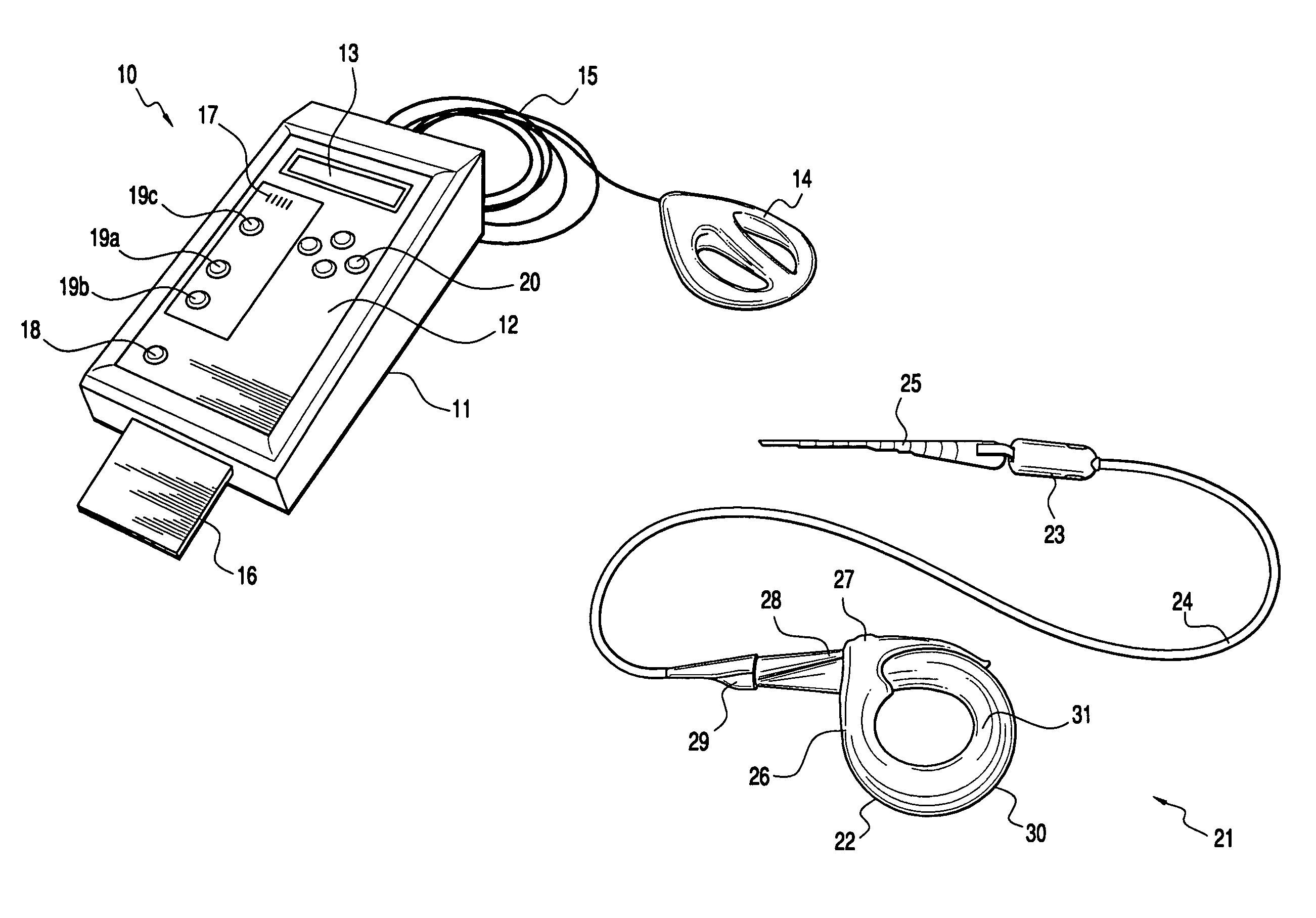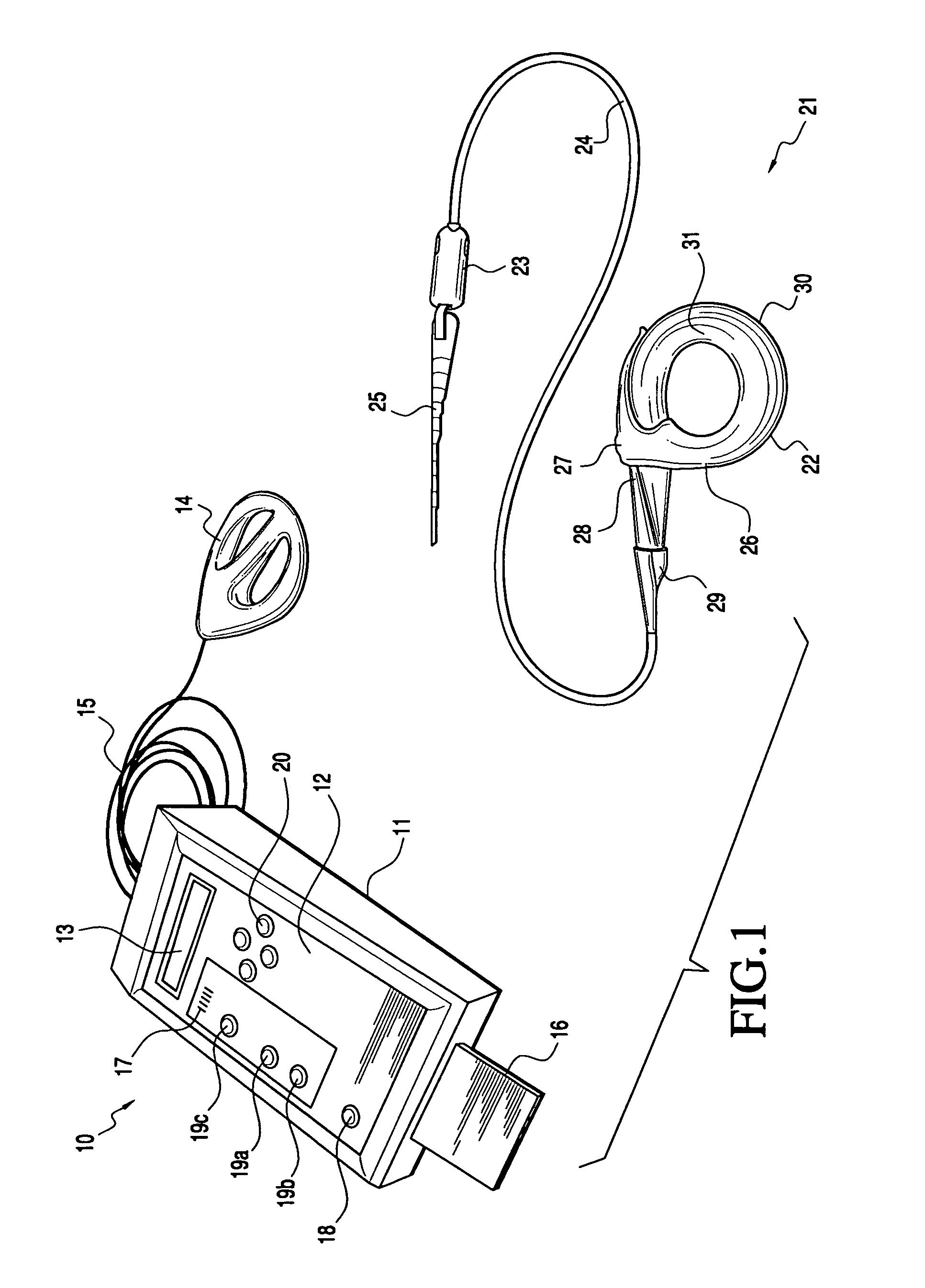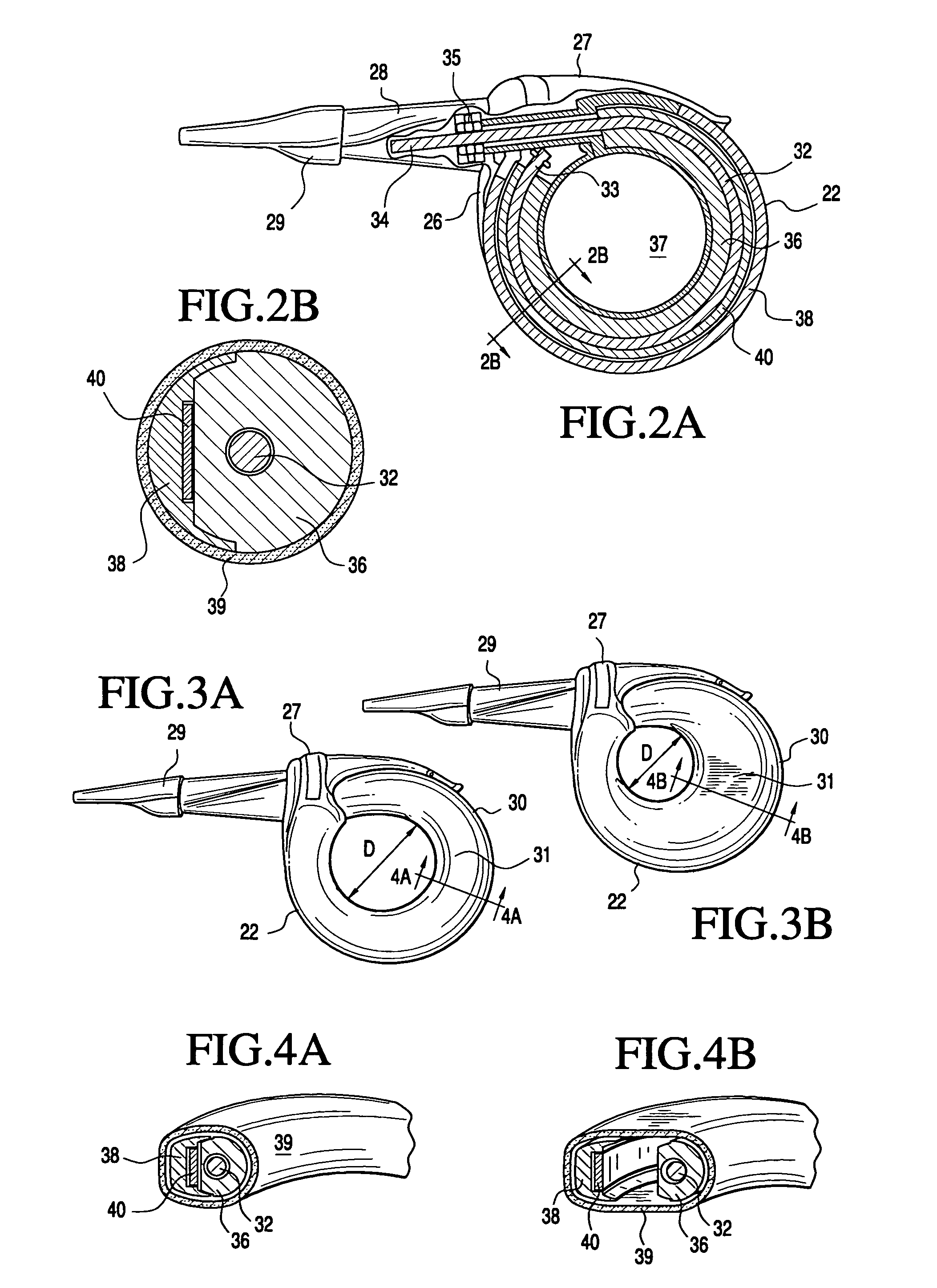Telemetrically controlled band for regulating functioning of a body organ or duct, and methods of making, implantation and use
a technology of telemetry control and body organs, applied in the field of laparoscopic implants, can solve the problems of reducing the risk of early death of patients, reducing the life expectancy of patients by ten to fifteen years, and morbidly obese patients as a group are poorly adapted to achieve sustainable long-term weight loss, and achieve high precision in the degree of constriction
- Summary
- Abstract
- Description
- Claims
- Application Information
AI Technical Summary
Benefits of technology
Problems solved by technology
Method used
Image
Examples
Embodiment Construction
[0064]Referring now to FIG. 1, the banding system of the present invention is described, comprising external control 10 and implantable gastric band 21. In the following description reference will be made, by way of illustration, to a gastric band designed to be implanted around the stomach to selectively adjust the diameter of opening of the stoma, and thereby control food intake. Such regulation has the effect of creating a feeling of satiety in the patient after relatively little food is consumed, and provides an effective treatment for morbid obesity.
[0065]It is to be understood, however, that the present invention is in no way limited to gastroplasty, but on the contrary, advantageously may be applied to regulate the functioning of other body organs or ducts, such as in the treatment of gastro-esophageal reflux disease, urinary or fecal incontinence, colostomy, ileostomy or to regulate blood flow in connection with isolated organ perfusion for treatment of cancer. For treatment...
PUM
 Login to View More
Login to View More Abstract
Description
Claims
Application Information
 Login to View More
Login to View More - R&D
- Intellectual Property
- Life Sciences
- Materials
- Tech Scout
- Unparalleled Data Quality
- Higher Quality Content
- 60% Fewer Hallucinations
Browse by: Latest US Patents, China's latest patents, Technical Efficacy Thesaurus, Application Domain, Technology Topic, Popular Technical Reports.
© 2025 PatSnap. All rights reserved.Legal|Privacy policy|Modern Slavery Act Transparency Statement|Sitemap|About US| Contact US: help@patsnap.com



